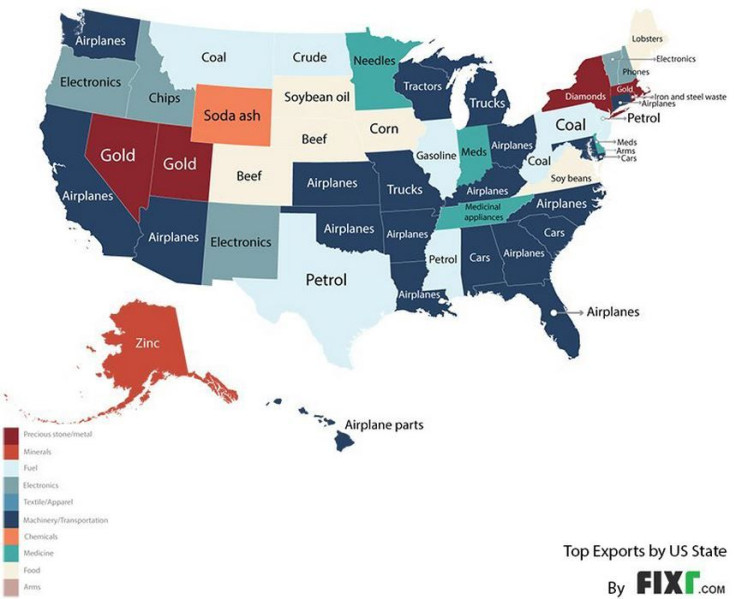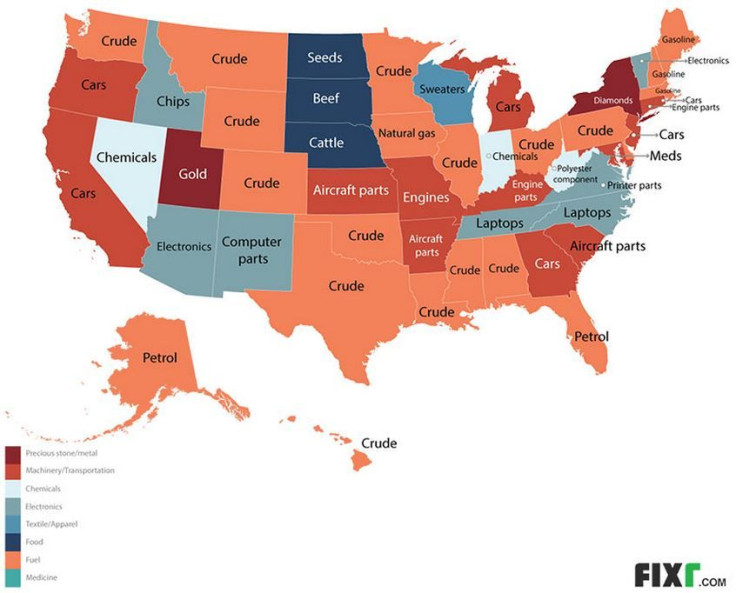US Economy 2015: Check Out The Top Imports And Exports In Every US State
The U.S. buys far more products than it sells to the rest of the world and in March, the nation’s trade deficit ballooned to its largest level since the 2007-09 financial crisis. The U.S. imported $51.4 billion more in goods than it sold to foreign markets in that month alone.
The latest figures reported this week also show that the U.S. imported 7.7 percent more goods than just a month earlier, and exports grew by less than 1 percent over the same period, Financial Times reports. The import data may be slightly skewed by the February slowdown of West Coast ports due to labor conflicts, and it’s important to keep in mind that demand for services, which make up two-thirds of the U.S. economy, is on the rise, Reuters reports.
Still, though, plenty of goods are moving back and forth every day between U.S. companies and overseas customers or suppliers. Fixr, a website that analyzes consumer costs, compiled 2014 data from the U.S. Census Bureau to show the top imports and exports by dollar value for each state. The data highlight the major goods that contribute to both sides of the trade deficit data on a state-by-state basis.

From the data, it's clear that the U.S. remains a major manufacturing hub for the world’s airplanes, which Fixr says are primarily sold to Britain, China, Japan, France and the United Arab Emirates. The U.S. also specializes in refining fuels and Texas, New Jersey and Mississippi report their major export to be either petrol or gasoline. Other exports reflect major industries that are particularly active in a given state -- Michigan exports trucks, Maine sends lobsters and Iowa supplies the world with corn.
The latest trade figures show that Americans imported 20 percent more consumer goods in March and 10 percent more vehicles than in February. The graph of top imports by state shows that cars are the highest-value import for several states including California, Oregon, New Jersey and Georgia.
Meanwhile, crude oil is still a leading import for states including Ohio and Pennsylvania as well as a large swath of the South and West, even while overall imports of petroleum have dropped -- partly because of the money that companies in these states can still earn by refining it. Texas sold nearly $34 billion in petroleum products overseas last year, and crude was the state’s top import.

The trade deficit figures come right as the Senate is preparing to vote on whether to grant President Barack Obama fast-track approval status for the Trans-Pacific Partnership, a trade agreement among a dozen Pacific-rim countries, including Japan. Fast-track status would permit Congress to approve or reject the final draft of the document in full -- but make no edits. Obama says the arrangement would enable the U.S. to boost exports and reduce that deficit.
© Copyright IBTimes 2024. All rights reserved.






















